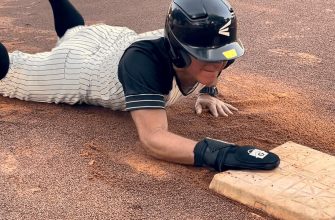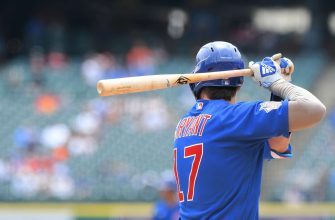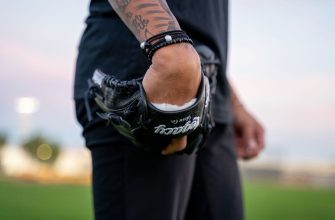Many young athletes play multiple sports throughout the year. As a parent or player, you may wonder if you can use the same cleats for both baseball and soccer. This is an important question, as wearing inappropriate footwear can hinder performance and may increase injury risk.
Baseball and soccer place different demands on your feet. The sports vary in field surface, quickness of movement, foot strike, and stresses on the feet and legs. Cleats optimized for baseball may not provide the traction, comfort or support needed for soccer.
While it may be tempting to try using your baseball cleats for soccer if you play both sports, it’s important to consider the key differences in the sports and footwear requirements. This article provides an in-depth look at baseball and soccer cleat designs, examining the pros and cons of using baseball cleats for soccer play. After reading, you’ll know if it’s advisable to use cross-over cleats or if separate pairs designed for each sport are recommended.
Differences Between Baseball and Soccer
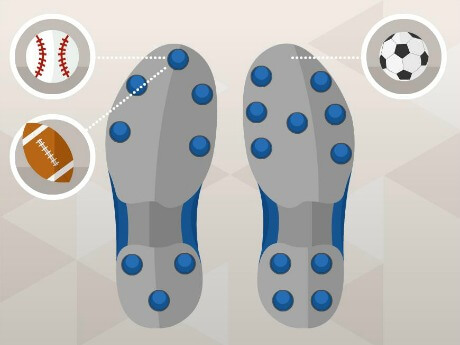
Baseball and soccer have substantially different movements and needs. As a result, their shoes have evolved to meet these sport-specific requirements.
In baseball, players typically move in short bursts – running between bases or making quick direction changes when fielding. There is far less distance covered overall compared to soccer. The playing surface is more static as well, with baseball played primarily on an enclosed dirt infield.
Soccer involves much more dynamic continuous movement up and down the length of a grass field, including sprinting, lateral cuts, and sudden changes in speed and direction. Distance covered in a match is several miles.
Positions in baseball also have more specialized roles compared to soccer. For example, pitchers have distinct needs from batters and infielders in baseball. In soccer, players at different positions still share more common motions overall like running, dribbling, passing and shooting.
Baseball Cleat Design and Features
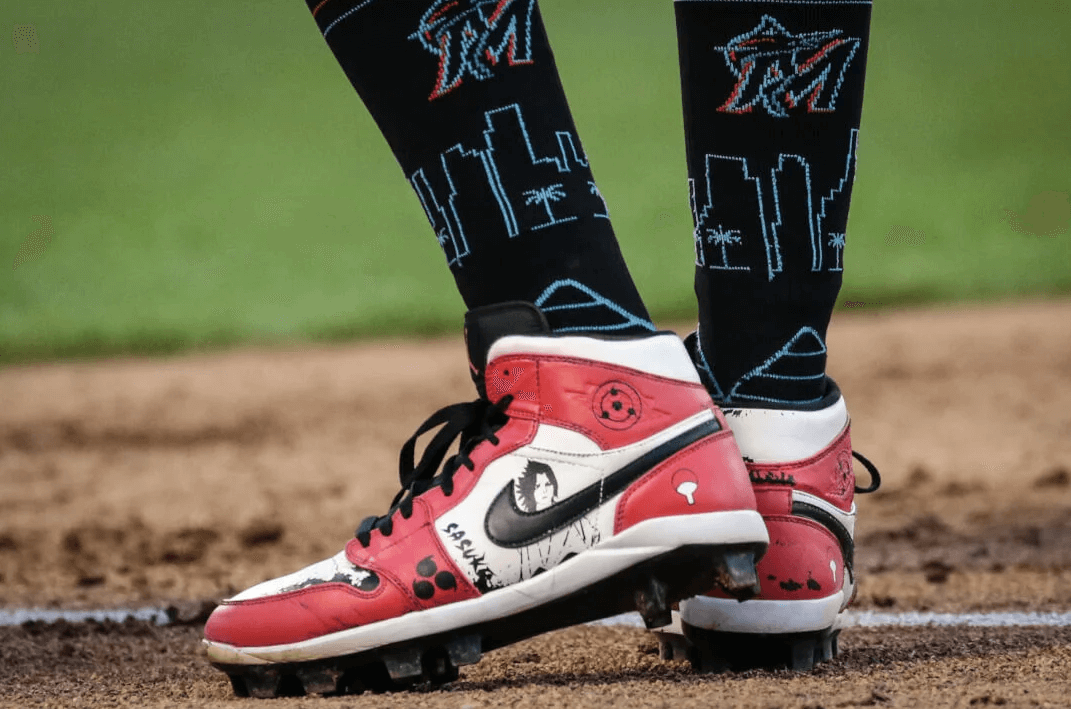
Baseball cleats are designed for the quick starts, stops, and direction changes required in baseball. The cleats feature a low-cut ankle collar to allow maximum ankle mobility. The uppers are typically made of lightweight synthetic leather or mesh to provide ventilation and flexibility.
The traction spikes on baseball cleats are made of molded plastic or metal. There are anywhere from 7 to 14 round or conical spikes arranged in the forefoot and heel areas. The spikes are relatively short, usually 1/4 to 1/2 inch long, to provide grip on the dirt infield without getting stuck. Baseball cleats do not provide much traction on the sides since lateral movements are less critical in baseball versus soccer.
The heel and toe areas have multiple spikes to allow players to push off and pivot aggressively on the balls of their feet. The spikes are often retractable so players can customize traction for different field conditions. Most baseball cleats have a TPU or EVA midsole for cushioning. They may also have an external heel counter for rearfoot stability when changing directions. The outsole rubber is durable but also flexible under the forefoot to facilitate sprinting.
Soccer Cleat Design and Features
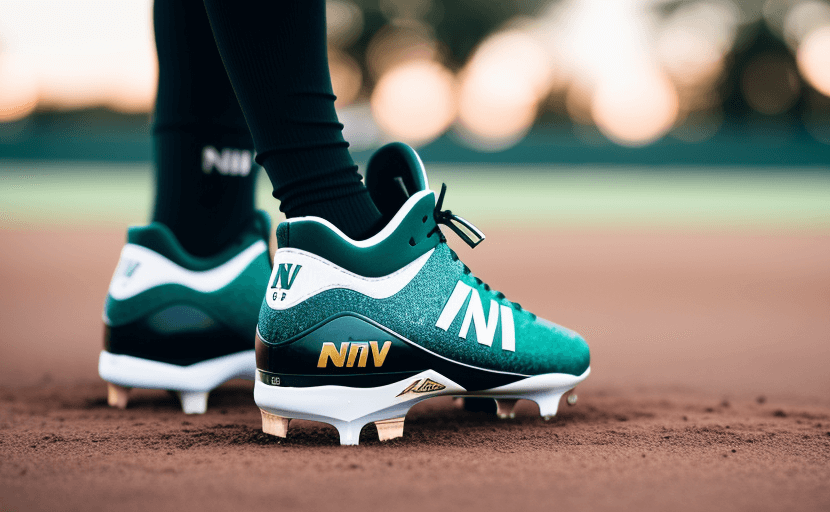
Soccer cleats have undergone major design changes and innovations in recent years to optimize performance for the sport. Here are some key features:
Materials
-
The upper part of soccer cleats is typically made of lightweight synthetic materials like polyurethane or synthetic leather. These provide durability and stretch.
-
Many high-end soccer cleats also incorporate synthetic materials like Nike’s Flyknit or Adidas Primeknit. These offer a sock-like fit and feel, with excellent ball control.
-
Soles are usually made of plastic, lightweight polymers, or carbon fiber. These offer rigidity for power while still being lightweight.
Studs vs Blades
-
Most soccer cleats have round plastic studs on the bottom, usually with 8-12 studs per shoe. The studs provide traction and grip on natural grass surfaces.
-
Some soccer cleats have a mix of conical studs and bladed studs. The bladed studs give additional traction for quick lateral cuts or hard acceleration while the conical studs provide overall grip.
-
Firm ground (FG) cleats have studs suited for natural grass in most conditions. Soft ground (SG) cleats have longer studs for very soft, muddy fields.
Position-Specific Designs
-
Midfielders tend to prefer lightness and agility, so their cleats focus on ball control and quick cuts.
-
Defenders need stability and traction when sprinting and reacting. Their shoes focus on grip and durability.
-
Forwards optimize for shot power and acceleration. Their cleats support straight-line speed and power transfer.
-
Goalkeeper cleats have a wider last, toe protection, and extra ankle support given their frequent diving saves.
Weight Considerations
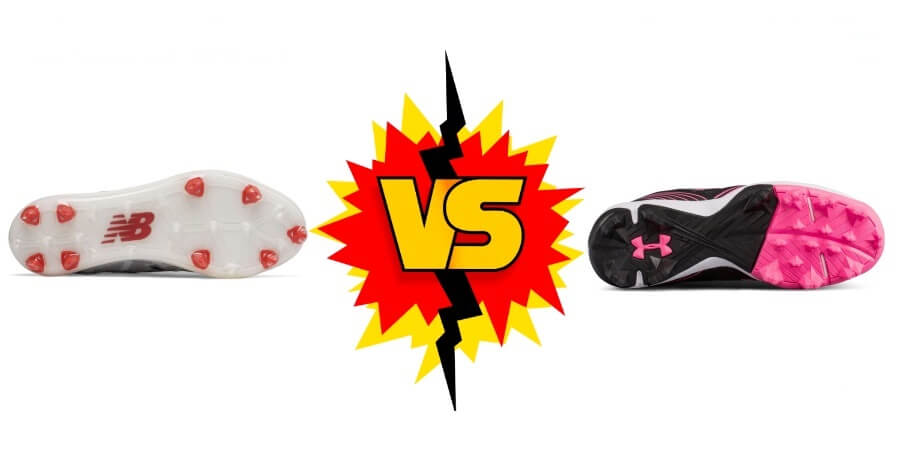
Soccer is a sport that requires short bursts of acceleration and speed as well as endurance over 90+ minutes of gameplay. The weight of cleats can have an impact on both acceleration and fatigue.
Soccer cleats are generally lighter weight than baseball cleats, often weighing 25-40% less. The lightweight design helps players accelerate quickly and change direction on a dime. The low weight also reduces fatigue so players’ legs feel fresher longer into a match.
Heavier baseball cleats can begin to feel like anchors on your feet during a long soccer match. Their bulkier construction and higher cuts are designed more for stability than speed. The extra weight makes it more challenging for rapid acceleration and cuts compared to purpose-built soccer cleats.
After running around for a full soccer match, a heavy baseball cleat will likely lead to increased fatigue and leg tiredness versus a lightweight soccer cleat. Over the course of a game, those extra ounces take their toll on your energy levels.
In summary, baseball cleats’ heavier weight can hinder acceleration and speed bursts during a soccer match. Their bulk also often leads to increased fatigue over a full 90+ minute game compared to properly fitted and lightweight soccer cleats.
Traction Differences
Baseball and soccer players make very different movements on the field, requiring different traction capabilities from their cleats.
In baseball, players are often stationary, aside from running between bases. Their movements are linear – running in straight lines or making quick lateral cuts. Baseball cleats have larger studs that grip the ground to provide traction for these linear motions.
Soccer requires much more rotational movement. Players are constantly changing direction, pivoting, and making cuts while dribbling or trying to shake a defender. Soccer cleat studs are designed for multidirectional traction to allow for these natural movements on the field. Soccer studs are typically rounder, shorter, and positioned for 360 degree traction.
The playing surface also affects traction needs. Baseball is played primarily on dirt and grass. Soccer is played on grass but also frequently on artificial turf, which has different friction properties. Baseball cleats with large studs dig into and damage artificial turf. But soccer cleats are made with smaller studs that can grip without tearing up turf fields.
So the linear motions of baseball versus the rotational movements of soccer players lead to very different traction demands. And baseball cleats are not ideally designed for the multidirectional traction needs of soccer on various playing surfaces.
Fit and Sizing

When considering using baseball cleats for soccer, one of the most important factors is getting the right fit. Baseball and soccer cleats are designed differently to accommodate the specific needs of each sport.
Width
Baseball cleats tend to be wider in the forefoot and toe box area to allow for quick starts and stops on the diamond. Soccer cleats have a more narrow profile to enhance touch and control on the ball. Wearing too wide of a cleat can allow too much foot movement inside the shoe, reducing precision when dribbling or passing.
Cushioning
The cushioning also differs, with baseball cleats offering more padding around the ankles and Achilles for comfort when batting. Soccer shoes provide thinner uppers and less heel padding for better ground feel and traction. The extra cushioning in baseball cleats may feel initially comfortable but can reduce touch sensitivity.
Arches
In addition, baseball cleats often have higher arch support to improve lateral stability when fielding. Soccer shoes have a lower arch profile allowing for more natural foot movement and ball control. The higher arch on a baseball cleat may feel constricting when running and cutting on the soccer pitch.
When trying baseball cleats for soccer, consider how the width, cushioning, and arch support fit your foot. Brand new cleats may need to be broken-in properly to adapt to your foot shape before determining if they will work for your soccer needs.
Performance and Safety

Using baseball cleats for soccer can impact your performance and increase your risk of injury. The two sports place different demands on your feet and legs, so it’s important to wear cleats designed specifically for each sport.
Baseball emphasizes lateral movements and quick starts and stops. Soccer requires more multidirectional movements as well as sprinting. Baseball cleats have a raised heel and higher ankle cut for stability when batting and fielding. Soccer cleats have a lower profile and increased forefoot flexibility to support pivoting and kicking the ball.
The higher ankle cut on baseball cleats provides more protection against ankle sprains and rolls. Soccer players land awkwardly after jumps and get kicked in the ankles more often. Wearing baseball cleats for soccer removes that added ankle support.
Soccer cleats also have a reinforced toe bumper to protect your feet when kicking or stopping the ball. Baseball cleats lack this extra shielding. Getting stepped on or kicked with baseball cleats exposes your metatarsals and toes to increased risk of fractures and bruising.
Ultimately, soccer-specific cleats are engineered to meet the athletic demands of the sport in ways that support safer, optimal performance. Baseball cleats cannot provide the same level of protection and mobility needed on the soccer pitch.
Recommendations for Cross-Use

While it’s possible to wear baseball cleats for soccer, it’s generally not recommended as there are key differences in the sports and their equipment needs. However, in certain positions and situations, it may be possible with some precautions.
Positions Best Suited for Crossover
Goalkeeper – Since goalies do less running and lateral movements, baseball cleats may provide enough traction for their needs. The added toe protection could also be beneficial.
Defender – Defenders stay mostly in one area and make fewer sprints, so baseball cleats could work. However, they may lack the grip needed for sudden changes of direction.
Midfielder – Not recommended. Midfielders need to pivot and sprint frequently, so soccer cleats are much better suited. Baseball cleats won’t provide enough traction and could lead to injury.
Forward – Also not ideal. Forwards need acceleration and agility to beat defenders, making soccer cleats the safer, higher performing option.
Caution About Increased Injury Risk
Wearing baseball cleats for soccer, especially for positions that involve lots of running and lateral movements, carries an increased injury risk. The lack of grip could lead to slips and falls, resulting in sprains, torn ligaments, and other impact injuries. Ill-fitting cleats that don’t properly stabilize the ankles are also concerning. Make sure to carefully inspect field conditions and consider all risks before attempting to use baseball cleats for soccer. Proper fit and comfort in the footwear is essential.
Conclusion
Baseball and soccer have differences in technique and field surface that influence cleat design. While it may seem convenient to use the same cleats for both, each sport places unique demands on footwear.
Soccer requires constant movement and changes of direction, so soccer cleats are made to be lightweight and provide traction on grass. Baseball focuses on quick bursts of running and stability for hitting and throwing, leading to heavier cleats with more support and spikes made for dirt.
Using baseball cleats for soccer can reduce maneuverability and increase injury risk due to the cleats catching on turf. Wearing soccer cleats for baseball may not provide enough stability or traction compared to baseball-specific models.
It’s best to use the type of cleat designed for each sport. Having appropriate footwear tailored to the movements and field of your sport will maximize safety, comfort and performance. While it’s possible to use baseball cleats for soccer or vice versa, you sacrifice some key benefits.
Investing in both baseball and soccer cleats is the optimal choice. But if you can only choose one, select the pair designed for the sport you play more often. Proper footwear improves play and prevents injury. Choose the cleat that best matches the demands of your main sport.


